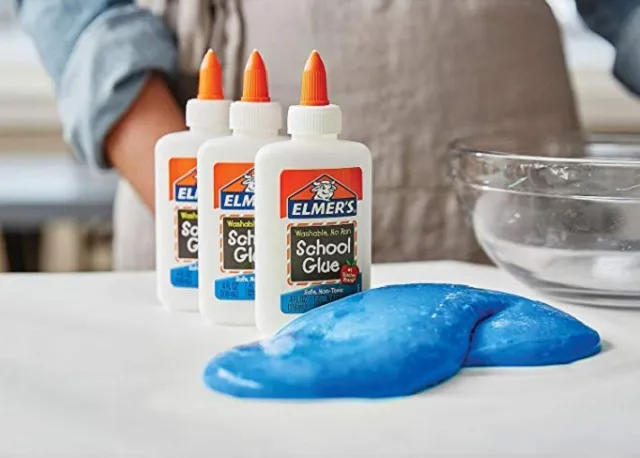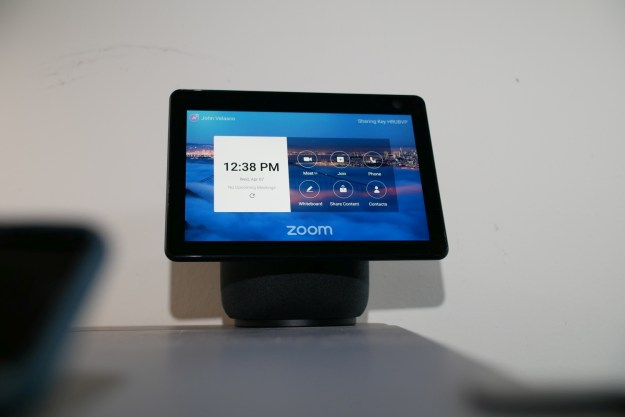
If you have children or you work with kids, you’ve likely heard about slime. Slime is pretty much everywhere — slime kits, slime products, and slime recipes. Children and adults alike enjoy the gooey substance, as it acts as a sort of stress reliever when you fidget with it.
Making slime at home can be a sticky business, though. If you use the wrong recipe, you could end up with a huge mess. Or, even worse, you may create something that’s hazardous to your health or irritating to your skin. People keep coming up with more and more types of slime, ranging from cloud slime to fluffy slime to butter slime to fragrant slime to metallic slime. These slime recipes can contain ingredients like dish detergent, shaving cream, clay, borax, baking soda, peel-off face mask, contact lens solution, glue, toothpaste, instant snow, fragrances, pigments, or other ingredients. With all of these different ingredients, it can be tough to know which recipes are safe and effective.
We researched dozens of different ingredients and tried several slime recipes. We found some recipes that turned out great and others that were epic fails. We also found recipes that were safe and others that used ingredients that were questionable at best. Here, we listed the best and safest recipes for making slime. Happy sliming!

How to make slime with glue (the “traditional” method)
This recipe is a variation of the Elmer’s recipe. It uses white school glue, baking soda, and contact lens solution. According to Elmer’s website, “Elmer’s new slime recipes are safe to make at home and include commonly used household ingredients such as baking soda and contact lens solution. Containing only trace amounts of boric acid, contact lens solution can be purchased over the counter and is regulated by the FDA. Baking soda is a common safe food ingredient.”
Here’s what you’ll need:
4 oz. school glue
1 and 1/2 teaspoons of baking soda
1 tablespoon of contact lens solution
food coloring (optional)
How to make slime with glue:
1) Pour the glue into a disposable cup or bowl.
2) Add the baking soda and stir until everything is well mixed.
3) Add a small amount of food coloring. If you use too much, the slime will color your hands and other surfaces.
4) Add the contact lens solution slowly and stir and knead the mixture until it becomes thick and putty-like. Do not add too much contact lens solution. If you add too much, your slime will have a wet feeling, and it will not last as long.
Tips
- Add tiny charms to your slime for a fun pop of color.
- If you want to make a specialty slime, use recipes from reputable well-known sites. For instance, here’s a great butter slime recipe from Crayola, which uses lotion and to create a buttery texture.
- Use to make a translucent, glass-like slime.
- Some people add instant snow to make could slime, but this can irritate the skin. If you want to make cloud slime, add tiny Styrofoam balls (like these ones ).
How to make edible slime
Some of the edible slime recipes we’ve seen use raw flour or cornstarch as a thickener. However, if the recipe calls for raw ingredients, keep in mind that eating raw flour or starch may not be the best idea. Raw starches can be difficult to digest and can cause you to get a stomach ache.
We tried a variety of edible slime recipes. After comparing the ingredients, texture, and taste, we came up with a formula for chocolate slime. Although it doesn’t exactly look appetizing, it actually tastes pretty good, and it has a consistency that’s similar to the traditional glue slime.
What you’ll need:
1 cup of confectioners sugar
1 teaspoon of cocoa powder
1/8 teaspoon of salt
1 tablespoon of butter, margarine, or coconut oil
2 teaspoons of warm water
How to make edible chocolate slime:
1) Melt your butter, margarine, or coconut oil in the microwave for about 30 to 45 seconds.
2) Add the warm water and stir.
3) Add the confectioner sugar, cocoa, and salt and stir the mixture until it’s smooth.
4) Let it sit for about 5 minutes.
5) Play with your edible slime and eat it!
Questionable ways to make slime
You can find slime recipes online using just about any ingredient ranging from shampoo to toothpaste to borax to dish detergent to scented oils. While mixing shampoo and toothpaste will create something that’s sticky and gooey, it’s not something you’ll want to play with because it ends up being more of a slop than a slime. Plus, because slime is something you touch and keep in your hands for long periods of time, some of these ingredients are not exactly ideal.
Before putting any scents in your slime, research the scented oil you’re planning to use in your slime recipe first because many scented oil products are not designed for use on the skin. Also, keep a watch out for how your skin reacts to specific slime recipes. Fluffy slime, for instance, uses shaving cream to create that fluffy texture.
The National Center for Biotechnology Information published research on the effects of over-washing hands and overusing hygiene products. Overusing soap products can damage the skin by changing the proteins and intercellular lipids. When soaps and detergents deplete those surface lipids, they can then get into the superficial skin layers. If you have dry skin (or it’s dry-skin season), this tends to happen more quickly. Damage to the skin also changes skin flora, which allows for more bacteria (like staph) to grow.
Also, some people are allergic to soaps and shampoos. According to the National Register of Adverse Effects from Cosmetic Products, symptoms of a soap or hair care product allergy can include redness, itching, eczema, blisters, or worse. We recommend that you avoid slime recipes that contain any ingredient like the ones above that can damage or irritate your skin. If you have any concern or reservations about a slime ingredient, skip it and use a different recipe. You’ll be glad that you did.
Editors' Recommendations
- How to use all Amazon Alexa alarm clock features
- How to use the Google Home app on a computer
- How to set up and install the Google Nest Doorbell (battery)
- How to make restaurant reservations with a HomePod
- How to make your Amazon Echo bark like a dog to scare off intruders




